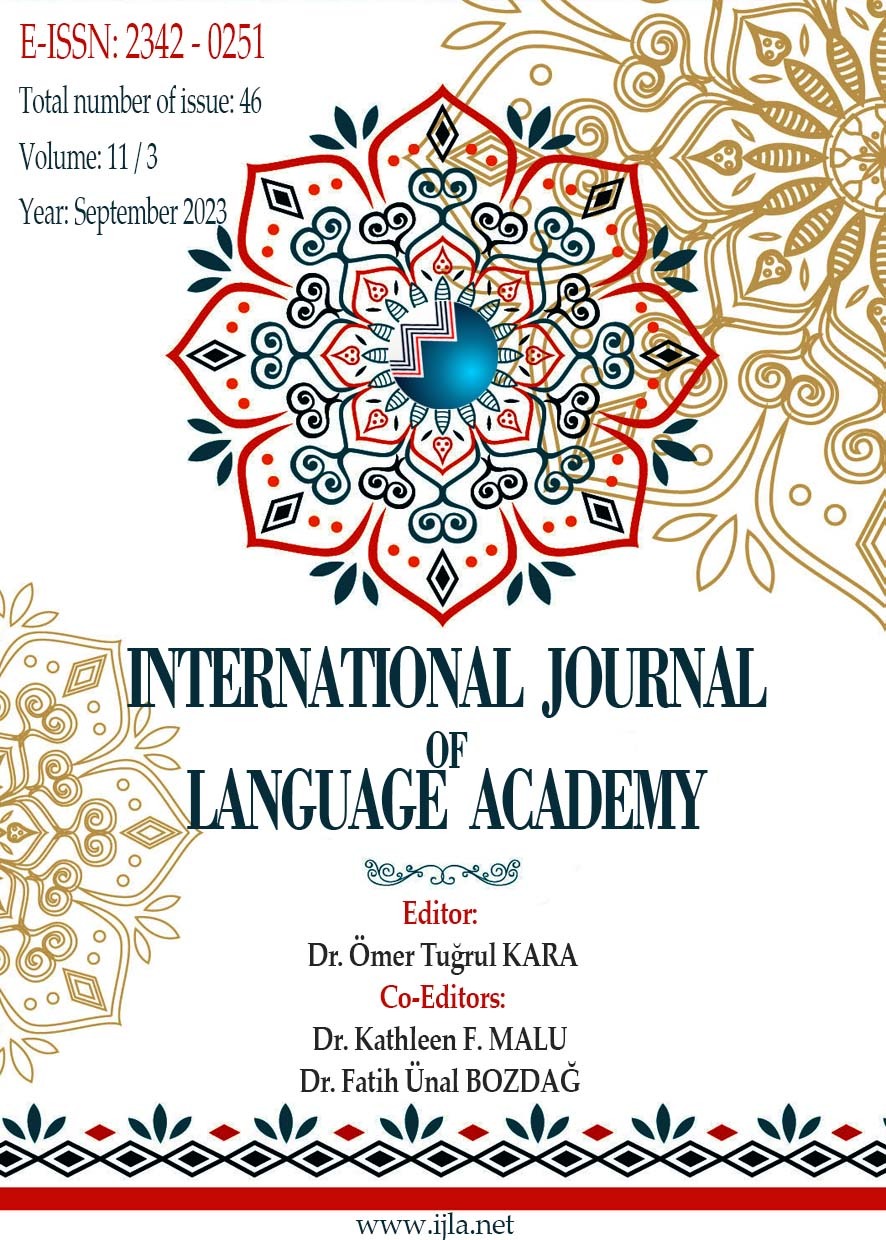Author :
Abstract
Bu çalışmada Küçük Bay-Bayanlar hikâye kitaplarının okunabilirlik düzeyleri incelenmiştir. Çocuk edebiyatı eserlerinin okunabilirlik düzeylerinin hedef kitleye uygun olması önemlidir. Okunabilirlik, tümcedeki sözcük sayısına ve sözcükteki seslem sayısına dayanmaktadır. Bu sayılarla elde edilen ortalama tümce ve sözcük uzunlukları ortaya çıkarılarak okunabilirlik puanı hesaplanmaktadır. Bu araştırmanın çalışma materyallerini Roger Hargreaves tarafından yazılan Küçük Bay ve Bayan serisi adlı hikâye kitapları oluşturmaktadır. Çalışmada bu seriden basit rastgele seçilen 20 adet hikâye kitabı incelenmiştir. Çalışmada hikâye kitaplarının çocukların anlama seviyelerine ne kadar uygun olduğunu belirlemek amacıyla doküman analizi yapılmıştır. Araştırmanın analizinde “Ateşman (1997) ve Çetinkaya-Uzun (2010) Okunabilirlik Formülleri” kullanılmıştır ve bunlar karşılaştırılmıştır. Bu formüllerde cümledeki ortalama kelime sayısı ve kelimedeki ortalama hece uzunluğu kullanılmaktadır. Ateşman ve Çetinkaya-Uzun okunabilirlik formüllerine göre hikâyeler ortalama sözcük ve cümle uzunlukları yönünden incelendiğinde ortalama sözcük uzunluklarının 2,14 ile 2,87 arasında; ortalama cümle uzunluklarının da 5,20 ile 9,81 arasında değiştiği sonucuna ulaşılmıştır. Ateşman okunabilirlik formülüne göre “çok kolay” düzeyinde bir hikâye olduğu, “kolay” düzeyinde on sekiz hikâye olduğu ve “orta güçlükte” bir hikâyenin olduğu, “zor” ve “çok zor” düzeylerinde ise hikâye olmadığı sonucuna ulaşılmıştır. Çetinkaya-Uzun okunabilirlik formülüne göre “engelli düzey” de herhangi bir hikâye olmadığı, “eğitsel okuma” düzeyinde on beş hikâye, bağımsız okuma düzeyinde ise beş hikâye olduğu saptanmıştır. Yapılan çalışmanın sonucuna göre hikâye kitaplarının okunabilirlik düzeylerinin çocukların seviyelerine uygun olduğu tespit edilmiştir.
Keywords
Abstract
This study explores the readability levels of children's books in the Mr. Men and Little Miss series. It is important for the readability levels of works in children's literature to be suitable for their target audience. Readability depends on the number of words in a sentence and the number of sounds in a word. The average lengths of sentences and words obtained with those numbers reveal the readability score. The research materials of this study consist of the series of children's books written by Roger Hargreaves titled Mr. Men and Little Miss. The study explores 20 books selected from this series by simple random sampling method. Document analysis was conducted within the scope of the study to determine how suitable these books are for children's understanding levels. Analyses were conducted using the readability formulas by Atesman (1997) and Cetinkaya-Uzun (2010) and the two were compared. These formulas use the average number of words in a sentence and the average length of syllables in a word. The books were examined in terms of average lengths of words and sentences using the readability formulas by Atesman and Cetinkaya-Uzun, and the results showed that average word lengths ranged between 2.14 and 2.87, and average sentence length varied between 5.20 and 9.81. According to Ateman's readability formula, there was one book at the "very easy" level, eighteen books at the "easy" level, and one book at the "moderately difficult" level, whereas there were no books at the "difficult" and "very difficult" levels. The readability formula by Cetinkaya-Uzun showed that there were no books at the "frustration" level, fifteen books at the "educational reading" level, and five books at the "independent reading" level. The results of the study revealed that the readability levels of the books were suitable for children's levels.
